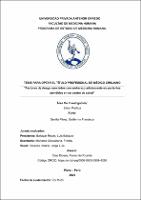Factores de riesgo asociados con embarazo adolescente en pacientes atendidas en un centro de salud
Abstract
Determinar los factores de riesgo para embarazo en adolescentes en
el Centro de Salud I-3 Paccha durante el año 2023.
MATERIAL Y MÉTODO: Se llevó a cabo un estudio de casos y controles en el
Centro de Salud Paccha de la sierra norte del Perú, donde los casos fueron
adolescentes en gestación y los controles adolescentes no gestantes. Se calculó
una muestra de 63 casos y 63 controles y se aplicó un muestreo por conveniencia.
Se incluyeron variables sociodemográficas y personales, y se usó estadística
analítica bivariada y multivariada para encontrar la relación entre las variables
independientes y la gestación adolescente.
RESULTADOS: En el análisis multivariado se halló que aquellas que eran amas de
casa tenían el doble de riesgo de presentar un embarazo adolescente (ORc=2.37,
IC 95%= 1.57 – 3.61, p= <0.001), aquellas participantes que reportaron disfunción
familiar, tuvieron 49% más riesgo de presentar un embarazo adolescente
(ORc=1.49, IC 95%= 0.08 – 2.05, p= 0.015) y aquellas que reportaron haber
recibido información sobre métodos anticonceptivos tuvieron 35% menos riesgo de
presentar un embarazo adolescente (ORc=0.60, IC 95%= 0.42 – 0.85, p= 0.004).
CONCLUSIONES: La ocupación actual, la disfunción familiar y haber recibido
información sobre métodos anticonceptivos fueron factores asociados al embarazo
adolescente en esta población de estudio. To determine the risk factors for pregnancy in adolescents in the I-3
Paccha Health Center during the year 2023.
MATERIAL AND METHOD: A case-control study was carried out at the Paccha
Health Center in the northern highlands of Peru, where the cases were pregnant
adolescents and the controls were non-pregnant adolescents. A sample of 63 cases
and 63 controls was calculated and convenience sampling was applied.
Sociodemographic and personal variables were included, and bivariate and
multivariate analytical statistics were used to find the relationship between the
independent variables and adolescent gestation.
RESULTS: In the multivariate analysis it was found that those who were housewives
had twice the risk of having a teenage pregnancy (ORc=2.37, 95% CI= 1.57 - 3.61,
p= <0.001), those participants who reported family dysfunction had 49% higher risk
of having a teenage pregnancy (ORc=1. 49, 95% CI= 0.08 - 2.05, p= 0.015) and
those who reported having received information on contraceptive methods had 35%
lower risk of presenting an adolescent pregnancy (ORc=0.60, 95% CI= 0.42 - 0.85,
p= 0.004).
CONCLUSIONS: Current occupation, family dysfunction and having received
information about contraceptive methods were factors associated with teenage
pregnancy in this study population.
Subject
Collections
- Medicina Humana [2969]


